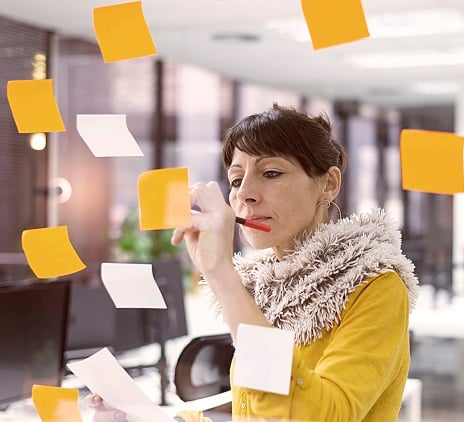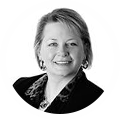-
Why Grant Thornton
Whether you’re growing in one market or many, looking to operate more effectively, managing risk and regulation, or realising stakeholder value, our firms can help.
-
Culture and experience
Grant Thornton’s culture is one of our most valuable assets and has steered us in the right direction for more than 100 years.
-
Global scale and capability
Beyond global scale, we embrace what makes each market unique, local understanding on a global scale.
-
Join our network
In a world that wants more options for high quality services, we differentiate in the market to grow sustainably in today’s rapidly changing environment.
-
Leadership governance and quality
Grant Thornton International Ltd acts as the coordinating entity for member firms in the network with a focus on areas such as strategy, risk, quality monitoring and brand.
-
Africa
24 member firms supporting your business.
-
Americas
31 member firms, covering 44 markets and over 20,000 people.
-
Asia-Pacific
19 member firms with nearly 25,000 people to support you.
-
Europe
53 member firms supporting your business.
-
Middle East
8 member firms supporting your business.
-
Business consulting services
Our business consulting services can help you improve your operational performance and productivity, adding value throughout your growth life cycle.
-
Business process solutions
We can help you identify, understand and manage potential risks to safeguard your business and comply with regulatory requirements.
-
Business risk services
The relationship between a company and its auditor has changed. Organisations must understand and manage risk and seek an appropriate balance between risk and opportunities.
-
Cybersecurity
As organisations become increasingly dependent on digital technology, the opportunities for cyber criminals continue to grow.
-
Forensic services
At Grant Thornton, we have a wealth of knowledge in forensic services and can support you with issues such as dispute resolution, fraud and insurance claims.
-
Mergers and acquisitions
We work with entrepreneurial businesses in the mid-market to help them assess the true commercial potential of their planned acquisition and understand how the purchase might serve their longer-term strategic goals.
-
Recovery and reorganisation
Workable solutions to maximise your value and deliver sustainable recovery.
-
Transactional advisory services
We can support you throughout the transaction process – helping achieve the best possible outcome at the point of the transaction and in the longer term.
-
Valuations
We provide a wide range of services to recovery and reorganisation professionals, companies and their stakeholders.

-
IFRS
At Grant Thornton, our IFRS advisers can help you navigate the complexity of financial reporting from IFRS 1 to IFRS 17 and IAS 1 to IAS 41.
-
Audit quality monitoring
Having a robust process of quality control is one of the most effective ways to guarantee we deliver high-quality services to our clients.
-
Global audit technology
Our global assurance technology platform provides the ability to conduct client acceptance, consultations and all assurance and other attestation engagements.

-
Corporate and business tax
Our trusted teams can prepare corporate tax files and ruling requests, support you with deferrals, accounting procedures and legitimate tax benefits.
-
Direct international tax
Our teams have in-depth knowledge of the relationship between domestic and international tax laws.
-
Global mobility services
Through our global organisation of member firms, we support both companies and individuals, providing insightful solutions to minimise the tax burden for both parties.
-
Indirect international tax
Using our finely tuned local knowledge, teams from our global organisation of member firms help you understand and comply with often complex and time-consuming regulations.
-
Transfer pricing
The laws surrounding transfer pricing are becoming ever more complex, as tax affairs of multinational companies are facing scrutiny from media, regulators and the public

-
 Banking Holding banking to account: the real diversity and inclusion pictureWe explore how the banking sector can continue to attract, retain and nurture women to build a more diverse and inclusive future.
Banking Holding banking to account: the real diversity and inclusion pictureWe explore how the banking sector can continue to attract, retain and nurture women to build a more diverse and inclusive future. -
 Sustainability From voluntary to mandatory ESG: How banks can future-proof their operationsAs we move from voluntary ESG initiatives to mandatory legislation, we explore what the banking sector needs to prioritise.
Sustainability From voluntary to mandatory ESG: How banks can future-proof their operationsAs we move from voluntary ESG initiatives to mandatory legislation, we explore what the banking sector needs to prioritise. -
 IFRS IFRS 9 - Audit of Expected Credit LossesGPPC releases The Auditor’s response to the risks of material misstatement posed by estimates of expected credit losses under IFRS 9
IFRS IFRS 9 - Audit of Expected Credit LossesGPPC releases The Auditor’s response to the risks of material misstatement posed by estimates of expected credit losses under IFRS 9 -
 growthiQ Steering your company to long-term successHistory has something important to tell us about the difficulties of steering a business to long-term success – through seismic shifts in technology, consumer demands and product development. With that in mind it’s unsurprising that over half the world’s largest companies in the early 1900s had shut their doors by the late 1990s. Some, however, have endured.
growthiQ Steering your company to long-term successHistory has something important to tell us about the difficulties of steering a business to long-term success – through seismic shifts in technology, consumer demands and product development. With that in mind it’s unsurprising that over half the world’s largest companies in the early 1900s had shut their doors by the late 1990s. Some, however, have endured.
-
 International Financial Reporting Standards Implementation of IFRS 17 ‘Insurance Contracts’The auditor’s response to the risks of material misstatement arising from estimates made in applying IFRS 17 ‘Insurance Contracts’
International Financial Reporting Standards Implementation of IFRS 17 ‘Insurance Contracts’The auditor’s response to the risks of material misstatement arising from estimates made in applying IFRS 17 ‘Insurance Contracts’ -
 IFRS Get ready for IFRS 17After twenty years of development the IASB has published IFRS 17 ‘Insurance Contracts’, find out more.
IFRS Get ready for IFRS 17After twenty years of development the IASB has published IFRS 17 ‘Insurance Contracts’, find out more.
-
 Global business pulse - industry analysis Mid-market recovery spreads to more industriesThe index results for 13 key industries of the mid-market reveals a very uneven recovery from COVID-19
Global business pulse - industry analysis Mid-market recovery spreads to more industriesThe index results for 13 key industries of the mid-market reveals a very uneven recovery from COVID-19 -
 Global business pulse - industry analysis A very uneven recovery across industriesThe index results for 13 key industries of the mid-market reveals a very uneven recovery from COVID-19
Global business pulse - industry analysis A very uneven recovery across industriesThe index results for 13 key industries of the mid-market reveals a very uneven recovery from COVID-19 -
 Global business pulse - Sector analysis Clear patterns of damage from COVID-19 across the industriesThe index results for 12 key sectors of the mid-market reveal just how much or little the various parts of the economy were impacted by COVID-19.
Global business pulse - Sector analysis Clear patterns of damage from COVID-19 across the industriesThe index results for 12 key sectors of the mid-market reveal just how much or little the various parts of the economy were impacted by COVID-19. -
 Not for profit Mission: possible – putting impact at the heart of charityGlobal charitable continues to decline and charity leaders are increasingly looking at their own unique impact journey.
Not for profit Mission: possible – putting impact at the heart of charityGlobal charitable continues to decline and charity leaders are increasingly looking at their own unique impact journey.
-
 Access to finance Raise finance to invest in changePrepare your business to raise finance to invest in change.
Access to finance Raise finance to invest in changePrepare your business to raise finance to invest in change. -
 Private equity firms Private equity in the mid-market: reshaping strategies for 2021When the global COVID-19 pandemic stormed across the globe in early 2020, the private equity sector was hit hard but deals are coming back to the market.
Private equity firms Private equity in the mid-market: reshaping strategies for 2021When the global COVID-19 pandemic stormed across the globe in early 2020, the private equity sector was hit hard but deals are coming back to the market. -
 Mid-market businesses Getting ready for private equity investmentOur specialists explore how private equity firms are now working with their portfolios and how the mid-market can benefit from investment.
Mid-market businesses Getting ready for private equity investmentOur specialists explore how private equity firms are now working with their portfolios and how the mid-market can benefit from investment. -
 Mid-market businesses Myth-busting private equityNervous about partnering with Private Equity? We explore some of the common myths we come across when speaking to mid-market businesses about PE investment.
Mid-market businesses Myth-busting private equityNervous about partnering with Private Equity? We explore some of the common myths we come across when speaking to mid-market businesses about PE investment.
-
 Public sector Helping build the government of tomorrow, todayLearn about the Grant Thornton US public sector team.
Public sector Helping build the government of tomorrow, todayLearn about the Grant Thornton US public sector team. -
 Global business pulse - industry analysis Mid-market recovery spreads to more industriesThe index results for 13 key industries of the mid-market reveals a very uneven recovery from COVID-19
Global business pulse - industry analysis Mid-market recovery spreads to more industriesThe index results for 13 key industries of the mid-market reveals a very uneven recovery from COVID-19 -
 Global business pulse - industry analysis A very uneven recovery across industriesThe index results for 13 key industries of the mid-market reveals a very uneven recovery from COVID-19
Global business pulse - industry analysis A very uneven recovery across industriesThe index results for 13 key industries of the mid-market reveals a very uneven recovery from COVID-19 -
 Global business pulse - Sector analysis Clear patterns of damage from COVID-19 across the industriesThe index results for 12 key sectors of the mid-market reveal just how much or little the various parts of the economy were impacted by COVID-19.
Global business pulse - Sector analysis Clear patterns of damage from COVID-19 across the industriesThe index results for 12 key sectors of the mid-market reveal just how much or little the various parts of the economy were impacted by COVID-19.
-
 Industries European Real Estate PodcastJessica Patel, Tax Partner at Grant Thornton UK speaks with tax partners and directors across the network to share their insights on the real estate market and some of the challenges.
Industries European Real Estate PodcastJessica Patel, Tax Partner at Grant Thornton UK speaks with tax partners and directors across the network to share their insights on the real estate market and some of the challenges. -
 Industries European Real Estate PodcastJessica Patel, Tax Partner at Grant Thornton UK speaks with tax partners and directors across the network to share their insights on the real estate market and some of the challenges.
Industries European Real Estate PodcastJessica Patel, Tax Partner at Grant Thornton UK speaks with tax partners and directors across the network to share their insights on the real estate market and some of the challenges. -
 Global business pulse - industry analysis Mid-market recovery spreads to more industriesThe index results for 13 key industries of the mid-market reveals a very uneven recovery from COVID-19
Global business pulse - industry analysis Mid-market recovery spreads to more industriesThe index results for 13 key industries of the mid-market reveals a very uneven recovery from COVID-19 -
 Global business pulse - industry analysis A very uneven recovery across industriesThe index results for 13 key industries of the mid-market reveals a very uneven recovery from COVID-19
Global business pulse - industry analysis A very uneven recovery across industriesThe index results for 13 key industries of the mid-market reveals a very uneven recovery from COVID-19
-

-
 Global business pulse - industry analysis Mid-market recovery spreads to more industriesThe index results for 13 key industries of the mid-market reveals a very uneven recovery from COVID-19
Global business pulse - industry analysis Mid-market recovery spreads to more industriesThe index results for 13 key industries of the mid-market reveals a very uneven recovery from COVID-19 -
 Global business pulse - industry analysis A very uneven recovery across industriesThe index results for 13 key industries of the mid-market reveals a very uneven recovery from COVID-19
Global business pulse - industry analysis A very uneven recovery across industriesThe index results for 13 key industries of the mid-market reveals a very uneven recovery from COVID-19 -
 Retail How retail is positioning for successCOVID-19 provided some hard lessons for the retail industry. It is time to turn those into sustainable and well executed growth strategies in 2021.
Retail How retail is positioning for successCOVID-19 provided some hard lessons for the retail industry. It is time to turn those into sustainable and well executed growth strategies in 2021.
-
 Telecoms Can tech and telecom leverage economic headwindsAs most businesses brace for an economic downturn, tech and telecom could see new prospects. But, to turn the headwinds to your advantage, you need to find your unique opportunities and risks.
Telecoms Can tech and telecom leverage economic headwindsAs most businesses brace for an economic downturn, tech and telecom could see new prospects. But, to turn the headwinds to your advantage, you need to find your unique opportunities and risks. -
 Technology Mid-market tech companies lead the way on diversity and inclusionWe explore how the mid-market tech sector can continue to build and nurture a culture that’s increasingly more diverse and inclusive for women.
Technology Mid-market tech companies lead the way on diversity and inclusionWe explore how the mid-market tech sector can continue to build and nurture a culture that’s increasingly more diverse and inclusive for women. -
 Technology Responding to slowing growth: why the tech industry faces a more challenging outlook in 2022We spoke to tech experts about industry trends that could affect companies over the next 12 months and what their short-term strategic priorities should be.
Technology Responding to slowing growth: why the tech industry faces a more challenging outlook in 2022We spoke to tech experts about industry trends that could affect companies over the next 12 months and what their short-term strategic priorities should be. -
 Tax Resetting global tax rules after the pandemicBusinesses are seeing rising challenges, and finance heads are dealing with a range of new measures. To say the next 12 months are critical for businesses is an understatement.
Tax Resetting global tax rules after the pandemicBusinesses are seeing rising challenges, and finance heads are dealing with a range of new measures. To say the next 12 months are critical for businesses is an understatement.
-
 Telecoms Can tech and telecom leverage economic headwindsAs most businesses brace for an economic downturn, tech and telecom could see new prospects. But, to turn the headwinds to your advantage, you need to find your unique opportunities and risks.
Telecoms Can tech and telecom leverage economic headwindsAs most businesses brace for an economic downturn, tech and telecom could see new prospects. But, to turn the headwinds to your advantage, you need to find your unique opportunities and risks. -
 TMT TMT industry: Fully charged or on standby?Our research revealed five key trends that resonated with Technology, Media and Telecoms (TMT) industry leaders around the world. We asked a panel of our experts from UK, US, India Ireland and Germany, to give us their reaction to the findings.
TMT TMT industry: Fully charged or on standby?Our research revealed five key trends that resonated with Technology, Media and Telecoms (TMT) industry leaders around the world. We asked a panel of our experts from UK, US, India Ireland and Germany, to give us their reaction to the findings. -
 Cybersecurity One size fits nothingTechnology companies must adopt a new approach to digital risk: those that successfully develop a reputation for digital trust by demonstrating an unwavering commitment to cyber security and data privacy will be able to carve out a competitive advantage.
Cybersecurity One size fits nothingTechnology companies must adopt a new approach to digital risk: those that successfully develop a reputation for digital trust by demonstrating an unwavering commitment to cyber security and data privacy will be able to carve out a competitive advantage. -
 Technology, media & telecommunications Why it’s time for a 5G reality checkFigures suggest the mobile sector is maturing. While data usage continues to soar, mobile revenues are expected to flatten out over the next few years.
Technology, media & telecommunications Why it’s time for a 5G reality checkFigures suggest the mobile sector is maturing. While data usage continues to soar, mobile revenues are expected to flatten out over the next few years.
-
 International business Mid-market businesses lifted by rising tide of optimismOptimism among global mid-market business leaders rose to 67% in the first half of this year and they are markedly more optimistic about their prospects with global optimism having increased by 8%.
International business Mid-market businesses lifted by rising tide of optimismOptimism among global mid-market business leaders rose to 67% in the first half of this year and they are markedly more optimistic about their prospects with global optimism having increased by 8%. -
 Global business pulse - industry analysis Mid-market recovery spreads to more industriesThe index results for 13 key industries of the mid-market reveals a very uneven recovery from COVID-19
Global business pulse - industry analysis Mid-market recovery spreads to more industriesThe index results for 13 key industries of the mid-market reveals a very uneven recovery from COVID-19 -
 Hotels COVID-19: Checking in with the hotel industry one year onCOVID-19 provided some hard lessons for the hotel sector. It is time to turn those into sustainable and well executed growth strategies.
Hotels COVID-19: Checking in with the hotel industry one year onCOVID-19 provided some hard lessons for the hotel sector. It is time to turn those into sustainable and well executed growth strategies. -
 Global business pulse - industry analysis A very uneven recovery across industriesThe index results for 13 key industries of the mid-market reveals a very uneven recovery from COVID-19
Global business pulse - industry analysis A very uneven recovery across industriesThe index results for 13 key industries of the mid-market reveals a very uneven recovery from COVID-19
- By topic
-
Women in Business 2024
2024 marks the 20th year of monitoring and measuring the proportion of women occupying senior management roles around the world.
-
COP28: Mid-market firms should seize the opportunity from adaption and innovation
COP28 was the first time there has been a global stocktake on progress against the Paris Agreement.
-
Scanning the horizon: Mid-market sets sights on global trade growth
The latest International Business Report (IBR) data shows that mid-market businesses have high expectations for global trade.
-
Mid-market businesses less optimistic, despite record numbers expecting increased profitability
A closer examination of the data offers some explanation of this apparent contradiction.
-
Women in leadership: a pathway to better performance
What makes the benefits of gender parity compelling is the impact it can have on commercial performance.
-
Women in Business 2024
2024 marks the 20th year of monitoring and measuring the proportion of women occupying senior management roles around the world.
-
Women in business: Regional picture
We saw an increase in the percentage of senior management roles held by women, on a global level, but there are some significant regional and country variations.
-
Pathways to Parity: Leading the way
To push towards parity of senior management roles held by women, who leads within an organisation is vital.
-
Generating real change with a long-term focus
The most successful strategy to achieve parity of women in senior management is one which stands alone, independent of an ESG strategy.
-
People at the heart of great business
Businesses have started to put guidelines and incentives in place, focused on driving employees back to the office.
-
Building a culture that champions diversity
Grant Thornton UAE has grown to have a team comprising more than 50 nationalities and this diverse staff has been key in building the inclusive culture of the firm.
-
Focusing and developing a solid strategy around diversity, equity and inclusion
Grant Thornton Greece is pioneering a growing set of diversity, equity and inclusion (DE&I) initiatives that centre around three strategic pillars.
-
Ten considerations for preparing TCFD climate-related financial disclosures
Insights for organisations preparing to implement the International Sustainability Standards Board (ISSB)’s Standards.
-
COP28: Mid-market firms should seize the opportunity from adaption and innovation
COP28 was the first time there has been a global stocktake on progress against the Paris Agreement.
-
Transition Plan Taskforce publishes its final disclosure framework
As organisations in the private sector make commitments and plans to reach net zero, there's a growing need for stakeholders to be able to assess the credibility of their transition plans.
-
Promoting ESG excellence through tax
ESG considerations have never been more important for an organisation’s long-term success, but how can tax be used to add value to an ESG agenda?
-
International business: Mid-market growth and expansion
The mid-market looks to international business opportunities for growth.
-
Top five constraints to international business in the mid-market
Top five major constraints that are testing the mid-market’s ability to grow their businesses internationally.
-
Brand and international marketing – breaking global barriers
Brand has been identified as a key driver of mid-market success when looking to grow and develop international business.
-
The key to international business: Investing in people
How can recruitment and retention help grow international business?
-
Building resilience in international business
Evolving supply chains and trade patterns amid ongoing global uncertainty.
-
IFRS Alerts
IFRS Alerts covering the latest changes published by the International Accounting Standards Board (IASB).
-
Example Financial Statements
General guidance for preparers of financial statements that supports the commitment to high quality, consistent application of IFRS.
-
Insights into IFRS 2
Insights into IFRS 2 summarises the key areas of the Standard, highlighting aspects that are more difficult to interpret and revisiting the most relevant features that could impact your business.
-
IFRS 3
Mergers and acquisitions are becoming more common as entities aim to achieve their growth objectives. IFRS 3 ‘Business Combinations’ contains the requirements for these transactions.
-
IFRS 8
Our ‘Insights into IFRS 8’ series considers some key implementation issues and includes interpretational guidance in certain problematic areas.
-
IFRS 16
Are you ready for IFRS 16? This series of insights will help you prepare.
-
IAS 36
Insights into IAS 36 provides assistance for preparers of financial statements and help where confusion has been seen in practice.
-
IFRS 17
Explaining the key features of the Standard and providing insights into its application and impact.
-
Pillar 2
Key updates and support for the global implementation of Pillar 2.
-
Global expatriate tax guide
Growing businesses that send their greatest assets – their people – overseas to work can face certain tax burdens, our global guide highlights the common tax rates and issues.
-
International indirect tax guide
Navigating the global VAT, GST and sales tax landscape.
-
Global transfer pricing guide
Helping you easily find everything you need to know about the rules and regulations regarding transfer pricing and Country by Country reporting for every country you do business with.
Indirect tax snapshot
Please click on each section to expand further:
Canadian sales taxes are levied at both the federal and provincial level. The federal government administers the value- added GST and HST. Federal audits and administration is undertaken by the Canada Revenue Agency (CRA), except in Quebec where Revenue Quebec administers both GST/HST and QST for most registrants except certain financial institutions.
The other provinces administer their own provincial sales tax.
GST/HST
The GST applies to taxable supplies made in Canada at the rate of 5%, unless HST is applicable as described below.
GST is a value added tax that applies to the value of the consideration charged on most goods and services supplied or imported into Canada. Most GST registrants are entitled to recover the GST/HST paid on expenditures by claiming an
input tax credit (ITC) if the expenditures are used in commercial activities, or rebates in limited circumstances may be available.
The provinces of Newfoundland and Labrador, New Brunswick, Nova Scotia, Ontario and Prince Edward Island have repealed their provincial sales taxes and have adopted the HST (combined rate of the 5% GST and a provincial component (8%-10%). When a supply is made within these participating provinces, HST applies instead of GST. The tax base for GST and HST is the same. The HST rate is currently 13% in Ontario, 15% in Nova Scotia, Newfoundland and Labrador, New Brunswick and Prince Edward Island.
Specific place of supply rules determine in which province the supply is deemed to have occurred and which rate of GST or HST will apply. These rules have been in place since 1 May 2010.
Certain goods and services, such as exports, basic groceries and prescription drugs are generally zero-rated, i.e., taxed at 0%. GST/HST is not collected on zero-rated supplies but the supplier continues to be entitled to claim ITCs for the GST or HST paid on related inputs.
Goods and services such as financial services, health and educational services are generally exempt. No GST or HST is charged on exempt supplies. However, unlike zero-rated supplies, ITCs cannot be claimed by the supplier for expenditures related to making exempt supplies. Certain public sector bodies such as charities may be entitled to prescribed rebates.
QST
The Quebec Sales Tax (QST) is also a value added tax and applies only to taxable supplies made in the province of Quebec. Generally, both GST and QST apply on the same goods and services. These taxes are stated separately on the invoice. The rules governing the application of QST have generally been harmonized with those for GST. Most QST registrants are entitled to recover QST paid on expenditures by claiming an input tax refund (ITR) if the expenditures are used in commercial activities, or in certain circumstances rebates.
QST currently applies at the rate of 9.975% on the consideration for the supply.
Although Quebec essentially harmonized the QST with the GST effective 1 January 2013, they continue to maintain a separate tax regime with separate registration and reporting. Revenue Quebec also administers the GST/HST for businesses located in Quebec except for certain financial institutions.
Large businesses
Large businesses in Ontario and Prince Edward Island with revenues in excess of $10 million for the associated group are were subject to reporting and recapture of the provincial component of the HST on certain expenses. These recapture rules effectively restrict refunds in respect of the provincial component of the tax five categories of expenses: meals and entertainment, motor vehicles, fuel for motor vehicles (other than diesel), telecommunications and energy not used in manufacturing. The recaptured input tax credits (RITCs) will be at the rate of 100% of the provincial component of the tax for the first five years and will then gradually be phased out over a three year period. Once eliminated, there will be a full recovery of the tax on these expenses in Ontario effective 1 July 2018 and in Prince Edward Island effective 1 April 2021.
The same restrictions apply in Quebec although the compliance requirements differ. For QST purposes, large businesses with revenues in excess of $10 million for the associated group are restricted from claiming refunds of ITRs on the same categories of expenses. Quebec has announced that they will also phase out the ITR restrictions over a three year period for large businesses starting 1 January 2018 with restrictions being fully eliminated effective 1 January 2021.
Any person carrying on business in Canada, including a non-resident, is required to become registered for GST/HST if their worldwide taxable sales, and that of the associated group, exceeds the registration threshold of $30,000 annually. A non-resident does not need to have a permanent establishment to be required to register. Once a person is considered to be carrying on business in Canada and makes a taxable supply in Canada, they are required to register provided their worldwide revenue has exceeded $30,000. A slightly higher threshold of $50,000 is available for public sector bodies such as charities and not-for-profit organizations.
In certain cases, voluntary registration may be permitted for residents or non-residents who are not required to become registered but wish to collect tax and recover the tax they pay.
QST registration is similar to the GST/HST registration requirements for a business being carried on in the province of Quebec; however, there are certain restrictions for non-residents of Canada voluntarily registering for QST and Quebec imposes a registration obligation on Canadian organizations that sell goods to consumers in Quebec.
Registration in the other provinces depends on a number of factors. The revenue threshold is $10,000 (other than Saskatchewan where there is no threshold). Most provinces look to the presence and activities being carried on in the particular province to determine registration. These three provinces specifically require non-residents of the province to register if taxable sales are made and there is direct marketing in their province.
Yes. The key test though for a non-established business is if they are considered to be carrying on business in Canada. The CRA will look to a number of factors to make this determination.
As of 1 July 2021, a “simplified” GST/HST registration obligation was imposed on non-established businesses even if they are not considered to be carrying on business in Canada if they make taxable supplies of intangibles or services to consumers (which includes non-registered businesses) and those sales exceed $30,000. It is often referred to as digital services tax but is much broader in its application.
No. Non-residents without a permanent establishment in Canada are required to post security with the taxing authority.
The security is equal to 50% of the estimated net tax of the person with a minimum of $5,000 and a maximum of $1,000,000. Non-residents also must agree to make their books and records available in Canada for review or agree to pay the cost for the CRA to travel to complete an audit.
No security is required to be posted under the “simplified” regime.
Once registered, GST/HST and QST registrants are required to file returns on a monthly, quarterly or annual basis depending on their annual sales made in Canada. The GST and HST are filed on the same return with no requirement to account or report the two taxes separately. The QST is typically a separate filing in the province of Quebec, but in limited cases a joint GST/HST and QST return is permitted to be filed.
Monthly returns are required if the Canadian taxable revenue of the person and the associated group is over $6 million. Quarterly returns are required if the taxable revenue of the person and the associated group is over $1,500,000 and is $6 million or below. Annual filing is required where the revenue is $1,500,000 or below. A person can elect to file more frequently if so desired and would do so if refunds are anticipated. Electronic filing may also be mandatory.
Returns are due within one month after the reporting period for monthly and quarterly filers and within three months for annual filers. Any net payable for a reporting period must be paid at the time of filing. Annual filers are required to make quarterly instalments after their first year.
If the return is in a net refund (credit) position, the refunds will be paid out to the registrant. The registrant must have the required documentary support on hand prior to making an ITC or ITR claim on the return.
Group or consolidated filing is generally not permitted federally. Each entity must file on its own. Certain very limited exceptions may occur with an election for eligible investment plans. Where tax is remitted by the wrong person, CRA may still assess the other entity for failure to remit tax.
Returns are prepared on an accrual basis at the time the supply is made and not on a cash basis. If a customer fails to pay for the taxable goods or services purchased and the supplier has remitted the respective federal and provincial sales taxes on the supply, the supplier may claim partial bad debt relief from the respective taxing authorities. However, the supplier must have exhausted all other means to collect the debt and the debt must be written off from the supplier’s books and records in order to be eligible for the relief.
The relief itself does not necessarily equal the tax; the amount is prorated depending on the amount of consideration already received.
Under the “simplified” regime, returns are filed on a quarterly calendar basis regardless of the level of taxable supplies.
Generally, returns must be filed in Canadian dollars. However, under the “simplified” regime, returns may be requested to be filed in certain approved alternative currencies.
The federal government and the respective provincial governments have instituted systems of penalties in their tax legislation to discourage failure to comply with their respective sales tax system. In addition, interest is charged on amounts outstanding. These interest and penalty amounts are generally not deductible for income tax purposes.
A penalty may be imposed by the tax authority if GST/HST and QST returns are not submitted on time, or the related tax is not paid by the due date.
Certain information returns may also be required for financial institutions including pension plans.
Yes. A range of penalties can be imposed where businesses do not comply with the GST/HST and QST rules. For example, a gross negligence penalty of 25% may be applied.
Penalties and interest can be applied for errors and omissions made on tax returns or where the tax is paid late. Penalties can also be applied where the business has failed to maintain adequate records, provide information (including additional declarations), or makes repeated mistakes.
Criminal proceedings may be brought in the case of more serious matters.
Generally, only GST/HST registered organizations may recover the VAT incurred. Non-registered businesses may not usually recover the tax unless the tax was paid in error (for example on qualifying zero-rated exports); there are limited rebates and some instances where tax on import may be claimed by another party.
To help minimize the instance of unrecoverable tax incurred by non-resident businesses, the Canadian GST/HST system has numerous zero-rating provisions related to services and supplies made to non-residents. These provisions should be reviewed carefully by any non-resident person acquiring supplies from Canadian suppliers.
Under the new “simplified” regime, no recovery of tax is permitted by the supplier.
An invoice must show:
- an invoice number which is unique and sequential
- the supplier’s name or business name, or the name of an intermediary
- the invoice date
- total amount of invoice
- amount of applicable tax
- supplier’s GST/HST and QST registration numbers
- purchaser’s name or business name
- terms of payment
- a description sufficient to identify the goods or services supplied to the customer.
It is important to note that the tax authorities are very strict in regards to a person obtaining the required documentation to support their ITC and ITR. Therefore, ensuring the invoice reflects the right information is very important to the purchaser.
An invoice must show:
- an invoice number which is unique and sequential
- the supplier’s name or business name, or the name of an intermediary
- the invoice date
- total amount of invoice
- amount of applicable tax
- supplier’s GST/HST and QST registration numbers
- purchaser’s name or business name
- terms of payment
- a description sufficient to identify the goods or services supplied to the customer.
It is important to note that the tax authorities are very strict in regards to a person obtaining the required documentation to support their ITC and ITR. Therefore, ensuring the invoice reflects the right information is very important to the purchaser.
While there is no SAF-T requirement in the Canada – the CRA requires organizations that maintain electronic records to be able to provide such records on audit. This is not a new requirement but has been in place for years. Nothing though is required to be submitted or linked with the submission of a return at this point in time. It is understood that Canada like many other jurisdictions is looking into this and could implement some sort of requirement at some point in the future.
Certain jurisdictions, like Quebec, also require certain software to be included in certain end user industries, i.e., restaurants, to ensure completeness and accuracy of records.
Contact us
For further information on indirect tax in Canada please contact:
|
Christina Zurowski (Toronto, Ontario) |
Maryse Janelle (Montréal, Québec) |



